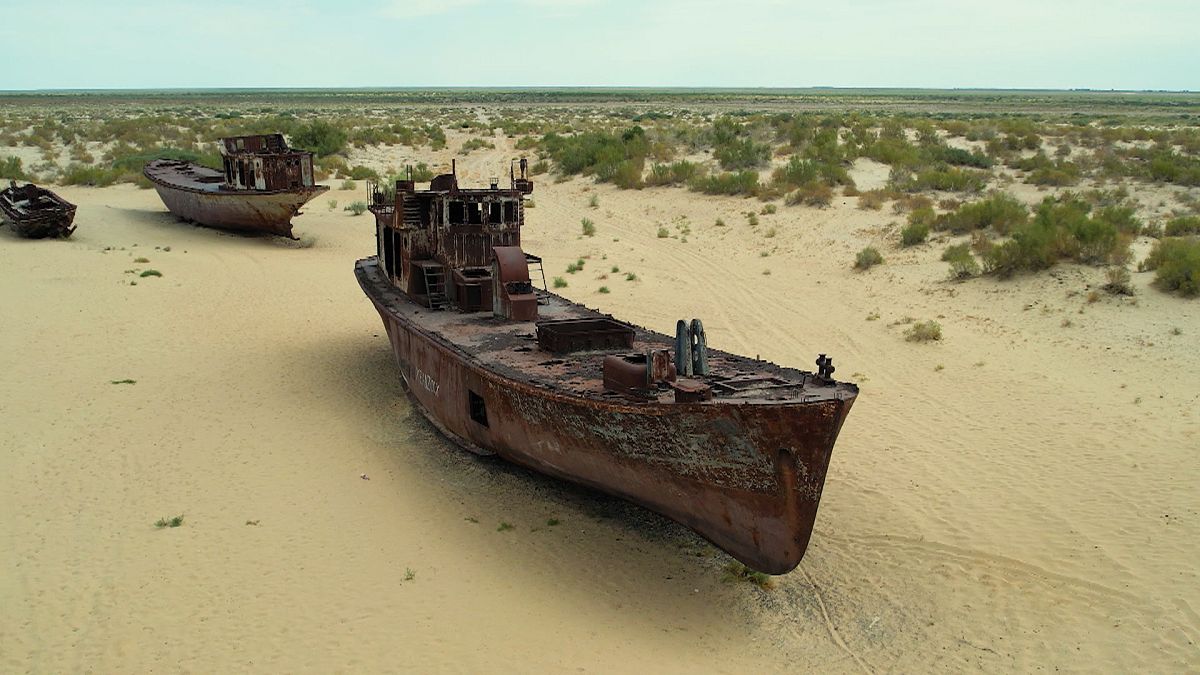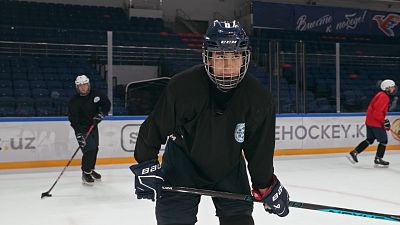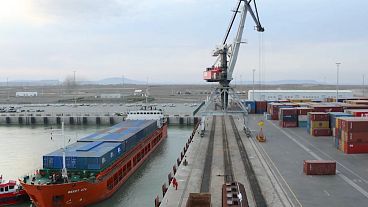In this episode of Focus, we look at a project to reverse the desertification of the region where the fourth largest lake in the world used to lie.
In the 1960s the Aralkum desert didn't exist and the area was covered by the giant Aral Sea. At the time it was the fourth largest lake in the world, but now it is just a tenth of its former size.
In the Soviet era one of the worst environmental tragedies was perpetrated when the two rivers that fed into it, the Amu Darya and Syr Darya, were diverted to irrigate fields - mostly growing cotton, a thirsty crop unsuitable for the region.
The sea irrigated a semi-desert region so that these crops could be grown but as it did, it steadily shrunk.
The climate has also changed: the summers are now hotter and the winters colder.
The Aral Sea still survives as three separate lakes, but it has lost an area of over 5.5 million hectares and what remains has been compared to Israel's Dead Sea, the saltiest body of inland water in the world.
The edge of the nearest part of the Aral Sea is now 150 kilometres away from Muynak, which once was a thriving port city which stood on its shoreline.
In its heyday it supplied the Soviet Union with a sixth of all the fish it consumed, but now it is a shadow of its former self.
Uzbekistan has been working with international agencies to reverse the desertification that's long blighted the region.
A government programme with financial and technical aid from international agencies is planting shrubs and trees to combat the desertification and re-green parts of the region.
Over a million hectares have already been greened in Muynak district.
The most important plant is the black saxual shrub which is renowned for its hardiness and ability to withstand drought for long periods.
The shrub acts as a shield, stopping the salt and the sand from being whipped up into the air and carried by the wind to populated areas.
"Saxaul serves as a mechanical obstacle. One such saxaul plant can retain one ton of toxic sand and salt. Zinovy Novitsky said the Chief Curator of Afforestation of the Drained Bottom of the Aral Sea State Programme, Uzbekistan told Euronews.
Each year sandstorms kick up more than 100 million tons of dust and pollutants such as fertilisers and pesticides into the air from where the bottom of the Aral Sea used to be.
During Soviet times the cotton fields used lots of pesticides and fertilisers which entered the water table and entered the Aral Sea. Later t he water evaporated but the chemicals didn't.
"If it weren't for it all this would have risen into the air and been carried over long distances," Novitsky added, referring to the saxual shrubs.
When the Aral Sea shrank, not only did local people lose a fishing industry they also began to suffered health problems from the toxic dust in the air and the polluted water they drank.
One project that aims to rehabilitate the region is called "My Garden in the Aral Sea" and the eventual goal is to plant a million trees and shrubs.
Ash, Elm, willow and catalpa trees have all been chosen for their drought resistance and hardiness.
Slowly the desertification is being reversed.
"Our task is to restore the ecosystem of this region so that such oases are created in other settlements," Bakhidjan Khabibulaev, the deirector of the International Innovation center for the Aral Sea Basin said.
"The goal is to help counteract the spread of salty sand and prevent soil erosion."
Three more weather stations will also be built in Muynak district which help monitor the re-greening process.
It's been partly paid for by USAID, United States' government aid agency which works with Uzbekistan and international scientists to try out new innovative technologies in the region.
"The data from these weather stations will be used by farmers to know when to better plant their crops, as well as the scientific community and governments on how to address environmental challenges in the Aral Sea region,"Mikaela Meredith, USAID director for Uzbekistan said.
In 2018 the UN Aral Sea Trust Fund was created and to date, it's raised 15 million euros with Uzbekistan and the EU being the largest donors.
The goal is to have a common strategy for the Aral Sea region.
"The Fund has implemented a lot of projects, the main areas are healthcare, a lot of work has been done to provide the population with drinking water," Uktam Abdurakhmanov, from the UN's Multi-Partner Human Security Trust Fund for Aral Sea Region, said.
The fund supports local, vulnerable citizens by helping them grow animal feed using a hydroponic system that doesn't need soil.
It's allowed locals to successfully grow plants for her sheep at home, in both the summer and the winter. "The soil outside is salty and difficult to grow on. In the Hydroponic system wheat grows well and can save space," one local woman, Ayjan Boribayeva, said.
And these solutions are not just appropriate to the Aral Sea region - they can also be adopted in other parts of the world that are suffering from desertification.




